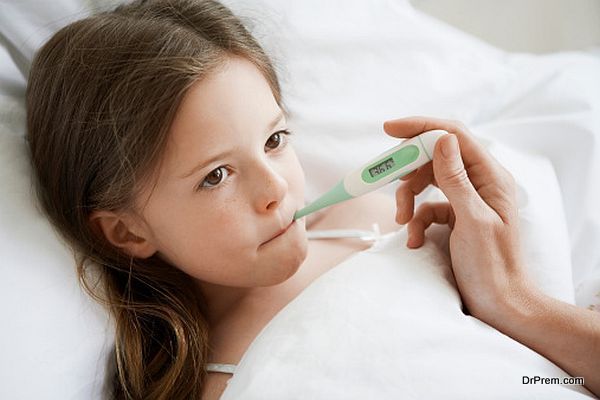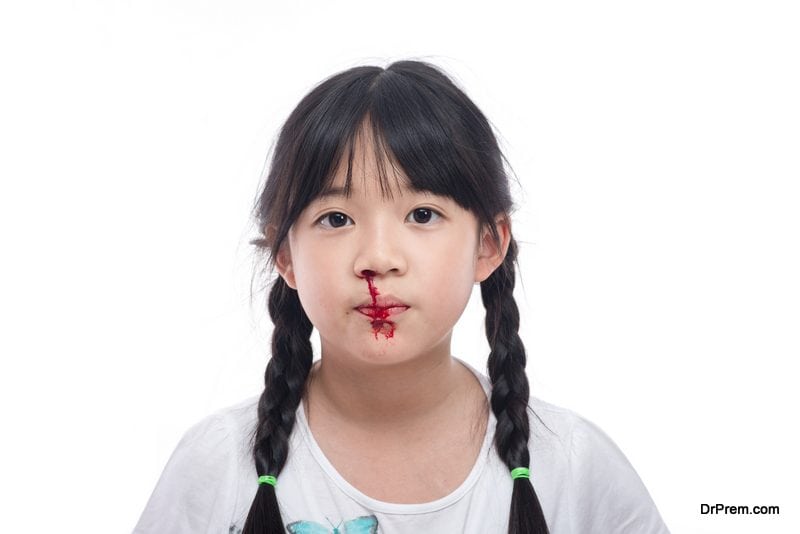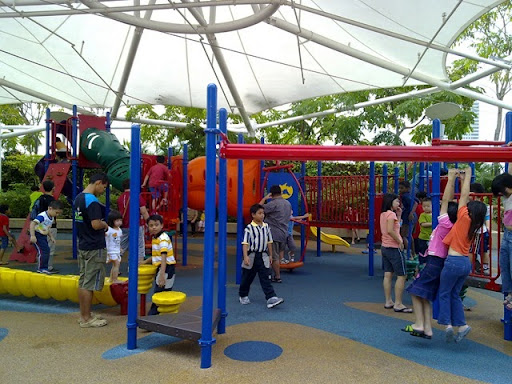While heat waves are rising strong across the globe, officials have warned parents to be aware of signs and symptoms of heat stroke in children. Summer holidays are often being related with family fun time – it can be long play hours in the park, pool, or beachside. But it should also be understood that with the rising atmospheric temperature, you are also exposed to a number of other issues, such as the heat stroke risk, especially in the most vulnerable population kids below 4 years.
Overview
 In general, the human body reacts with atmospheric temperature changes through adjusting internal body temperatures. When the outer temperature is high, the flow of oxygenated blood towards the skin surface is increased to transmit heat from within the body to the surface; and the same is being expressed through intense sweating. The body temperature is adjusted due to evaporation of sweat.
In general, the human body reacts with atmospheric temperature changes through adjusting internal body temperatures. When the outer temperature is high, the flow of oxygenated blood towards the skin surface is increased to transmit heat from within the body to the surface; and the same is being expressed through intense sweating. The body temperature is adjusted due to evaporation of sweat.
Routinely, the human body can withstand temperature raise up to 39-400C, wherein the brain sets down the alarming signal that is being identified by the muscles as a message to slow down and the body goes into the fatigue mode.
Beyond 410C, the body is exposed to heat stroke risk and hence, it starts shutting down the processes. During the heat stroke, all chemical processes inside our body are progressively affected, adding up to both structural as well as functional loss of cells; further leading to multiple organ failure, if not obtained immediate medical attention.
Heat Stroke in Children

As declared by the Centre of Disease Control (Atlanta), heat stroke in children is one of the leading causes of seasonal childhood mortalities. Experts have suggested that younger children and toddlers are unable to regulate the body temperature on their own, due to the underdeveloped regulatory mechanism. Moreover, they have less body surface area available for heat transfer and hence are more prone to heat stroke risks. The life-threatening after effects of heat stroke have shown the importance of paying attention to children during summers.
Thus, any child who is not able to regulate the body temperature on his own is at an increased risk of heat stroke. This may include:
- Toddles whose body surface area is high as compared to body mass index and can absorb more heat, produce more heat, but cannot recall drinking enough water on their own.
- Children with developmental disabilities may not be able to recognize the body’s need to replace fluid loss with the help of water.
- Babies, who are not able to move or change position on their own.
- Children with acute gastrointestinal illness, viral fever, or infection
- Children on medication with a reduced ability to regulate body temperature, like antihistamines, diuretics, mental health issues, etc.
Early signs of Heat Stroke in Children

Heat Exhaustion is not so serious version of heat stroke, but may turn into serious heat stroke if not treated as an emergency. Some of the signs of heat stroke noted herewith can be helpful in identifying heat stroke in children at an early stage to prevent its adverse events.
- An unusual headache
- Frequent mood swings, irritability
- Dizziness, fainting
- Bleeding through nose
- Pale, clammy skin
- Muscle cramps
- Loss of appetite
- Nausea associated with vomiting
- Frequent thirst
- Weakness, fatigue
- Elevated body temperature around 105-degree F
If any of these signs and symptoms are being expressed by your child, it is always advisable to get her under the roof or in a cool place away from the Sun. The heat stroke in children can often be avoided by keeping the minimum layer of clothing and hydrating with cool water or some low sugar drink that can replenish the electrolytes. However, if the above symptoms worsen, even after necessary first aid; you should always seek instant expert medical help.
If heat exhaustion is ignored for a longer period of time, heat stroke in children may take a toll with its adverse reactions, which can be noted as follows:
- Flushed, dried hot skin
- High body temperature, persistent with 1050F
- Fainting and/or loss of consciousness
- Seizures
- A severe headache, confusion, dizziness
- Irritability
- Rapid breathing
- Weakness
- Fatigue
- Coma
If any of the above symptoms are being noticed, immediately move your child away from the sun in a cool shed. Make him/her lie down with his/her feet slightly above the ground. Experts suggest to wet his/her clothes or at times skin as well to and fan vigorously for rapid cooling. You can as well encourage your child to drink cool fluids containing salt and sugar to maintain electrolyte balance.
Preventing Heat Stroke in Children

Although, heat stroke in children has major manifestations; it is always possible to avoid issues by taking right precautions, as noted herewith:
- Always make them drink plenty of water: – Drinking plenty of water is the most important to avoid electrolyte loss in the body through sweating, leading to the heat stroke in children. Some children are reluctant towards drinking water all day, they can be offered fruit smoothies, veggie juice, or sparkling water of their favorite flavor. This can keep them always hydrated.
- Eat hydrating fruits: – Dehydration can as well be avoided by offering your children some hydrating fruits, such as watermelon, bananas, grapes, etc. Studies have revealed that these hydrating fruits and vegetables are full of important minerals and electrolytes, such as magnesium, potassium, sodium, etc. that can help combat electrolyte loss.
- Avoid caffeine and other sugary drinks: – Dehydration can be prevented by avoiding caffeine and other sugary drinks, as they can increase the frequency of urination and allow the loss of electrolytes through the body. Experts have as well suggested that consumption of too much sugar can lead to inflammation and making the heat stroke in children all the more adverse.
- Avoid direct sunlight: – Direct sunlight can aggravate symptoms of heat stroke in children through unmanageable loss of electrolytes, and hence should be avoided.
Final Thoughts
Heat stroke in children is a medical emergency and should not be taken lightly. If ignored for a longer period of time, the body temperature can rise above 105-degree F, leading to coma and death. It is important to identify heat exhaustion symptoms to avoid adverse effects of heat stroke. If your child is suffering from heat stroke, it is necessary to hydrate him/her immediately and regulate his/her body temperature. Naturally, heat stroke in children can be prevented by drinking plenty of water as well as having hydrated fruits and vegetables to maintain electrolyte balance.




